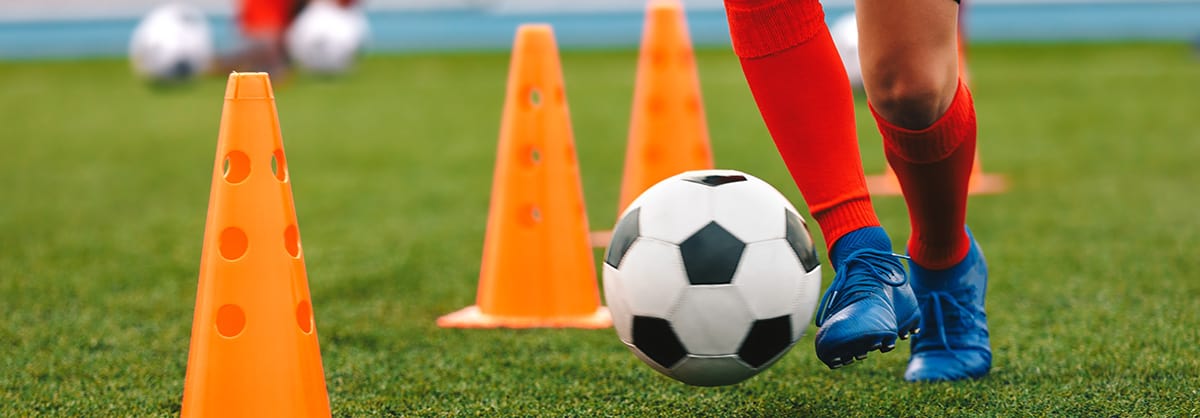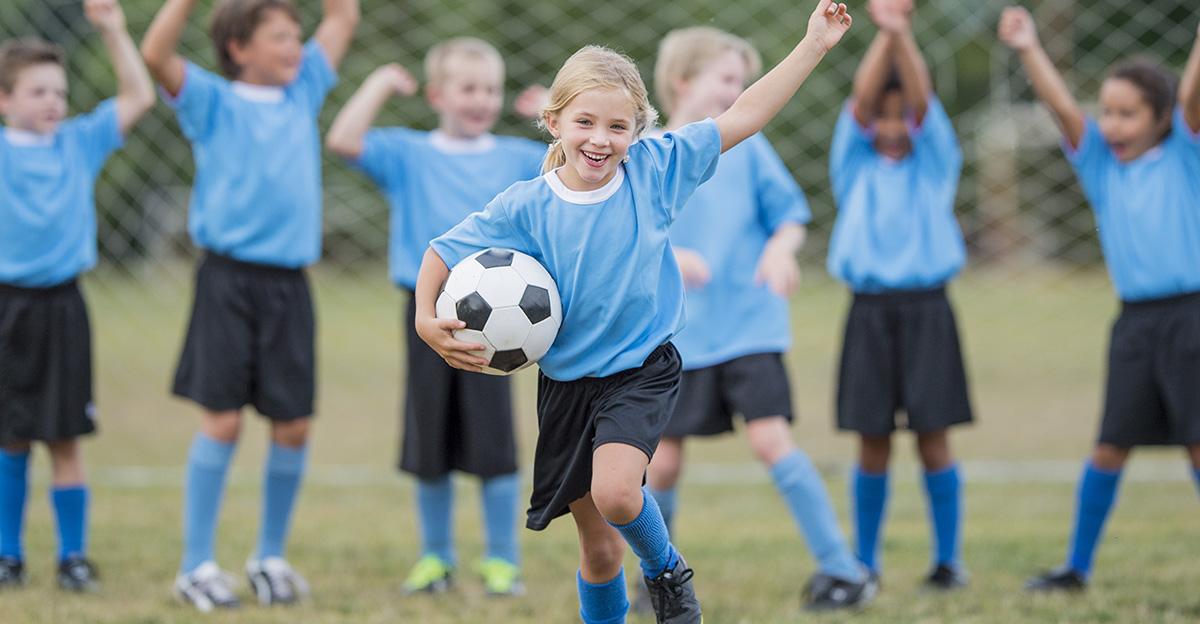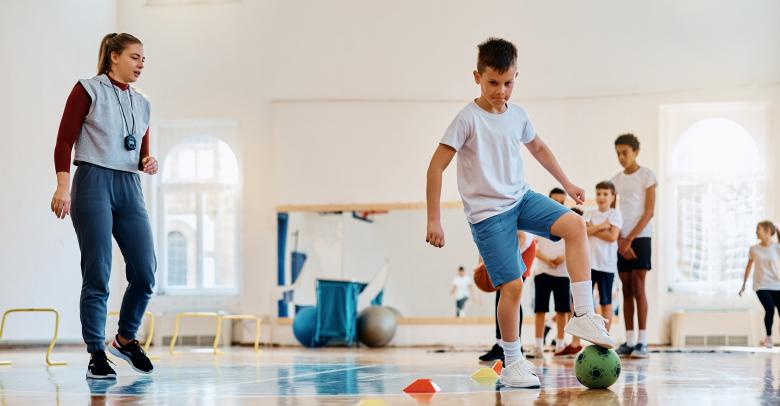Ball games and drills are crucial for solidifying the skills that young soccer players need to succeed. Grasping the game’s intricacies becomes second nature when the right activities are used to enforce the skills they need to take their gameplay to the next level.
1. Soccer Dribbling
Designed for kids in grades kindergarten through second, this drill helps get them used to a key skill in the game of soccer: dribbling with their feet. Use high visibility cones to establish a boundary before furnishing every player with a foam ball. First, demonstrate trapping the ball by putting a foot on top of it to stop its movement. Next, have the kids watch a demonstration of using the insides of the feet to guide the ball to the desired location. Emphasize the importance of keeping their heads up while jogging and dribbling.

2. Triangle Soccer Skills
Split the group of kindergarten, first, and second graders into smaller groups of three before providing each with a soccer ball. Set up each group so the three kids form a triangle with about 5 to 10 paces separating them. They should take turns passing the ball to their teammates and trapping the ball when it comes to them. Reiterate the importance of passing to each member of the group.
For the kick and score portion of this game, have two players face each other with the third in between them. The object is to gently pass the ball back and forth to each other so that it rolls through the legs of the player in the middle.
3. 4 Corner Soccer
Create a large playing area with one hoop at each of the four corners. Place a group of third to sixth graders — each with a soccer ball — at each of these corners as well. At the whistle, the players run to a different hoop, take a ball and dribble it to their home corner. The object is to visit as many hoops and take as many balls within the allotted time.
4. 2-Ball Kick and Dribble
Each group of third to sixth graders should contain five players and two soccer balls. Two spot markers indicate where home plate is and where the pitcher stands. The pitcher rolls a ball to a dribbler who then kicks it back to the pitcher. The pitcher traps the ball as the dribbler kicks a second ball toward the fielders. Each fielder must trap the ball before passing it along to a fellow fielder. All of the players need to pass the ball at least once with the last pass to the pitcher who kicks the ball toward the spot marker.
5. The Jungle
Designed for players in grades third through sixth, The Jungle helps improve agility. Each player should have both a cone and a ball. For small groups, additional cones can be scattered throughout the playing area. The players should practice dribbling around the cones, or “trees” in the Jungle. If a ball touches a tree, the players should do six toe taps on their ball. Increase the complexity by calling out “direction” so they change their direction. A cry of “speed” results in a change of speed.
6. Mini-Soccer
Get third through sixth grade players ready for a game by setting up a miniature version. Each group of eight should have one soccer ball and four pinnies. Using tall cones as goals, each group of four faces off against the other group of four on their playing field. A variety of both defensive and offensive strategies should be used by the team with the ball as they maneuver around the other group to reach the goals.
7. 3-on-1 Keep Away
This version of the classic game pits a three player offensive against a single defender. Designed for the middle school set, the members of the offensive team need to pass the ball within three seconds of getting it and should take three or fewer dribbles before doing so. The person with the ball enjoys a three foot buffer as the defender attempts to intercept the soccer ball while it’s being passed among the offensive team.
8. Corner to Corner Give and Go
In this drill, designed for middle school aged players, groups of four players practice the concept of “give and go” that is often the centerpiece of sports. The object is for players to pass the ball quickly and then move to another open spot so they can have the ball passed back to them. After passing the ball to the player on their left, the player then follows their pass before returning to their original corner. Lastly, the player cuts to the outside of the playing grid before returning to receive the pass.
9. On the Go
Designed for high school players, On the Go involves two groups of seven to eight players. Within the playing grid, one team is deemed to be the offense. Their goal is to always have possession of the soccer ball while also keeping it always on the go by passing and dribbling during the entire drill. Use pinnies to designate which team each player is on.
10. Spreading Out
This soccer drill is designed to help high school players avoid crowding around the soccer ball. Staying spread out across the field provides teams with more options to score. Calling out cues such as “deep and wide” alerts players that they’re crowding the ball.
Using the above drills and games helps teams to work more cohesively while becoming aware of some common pitfalls.






Leave a Reply